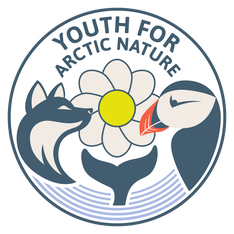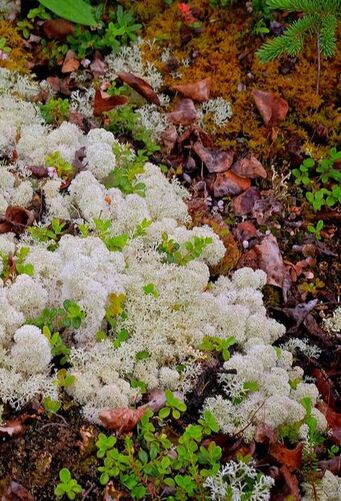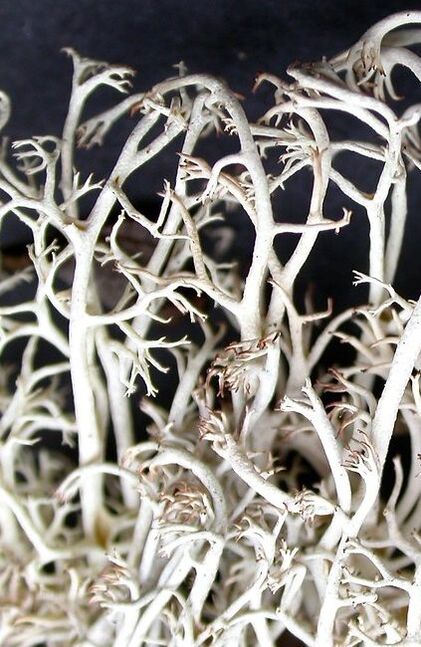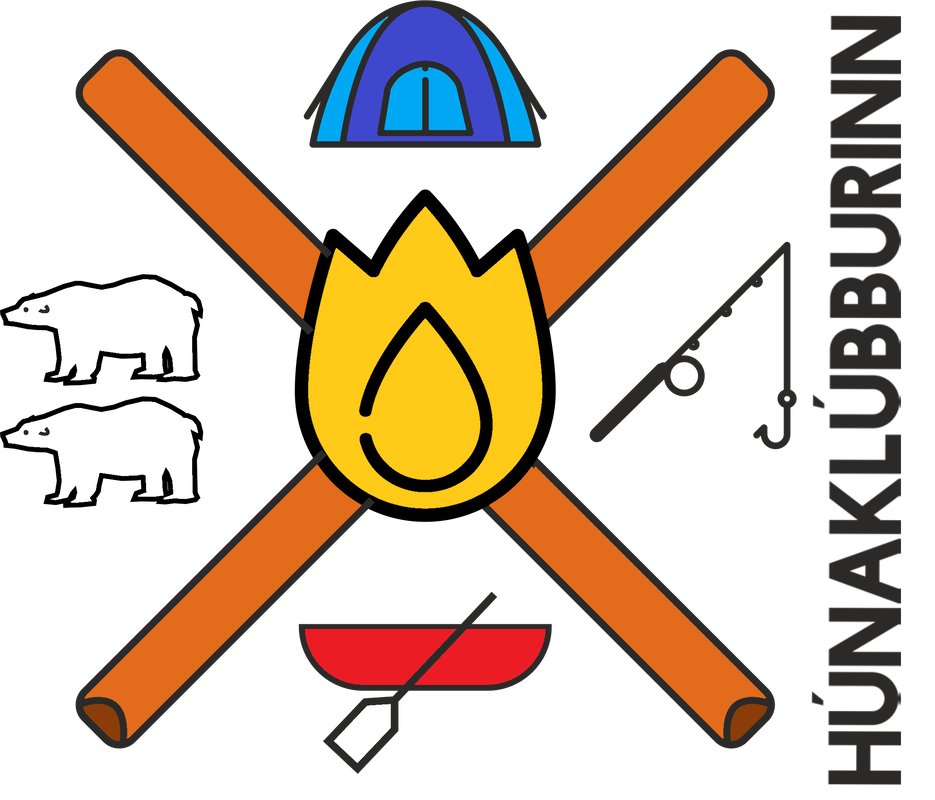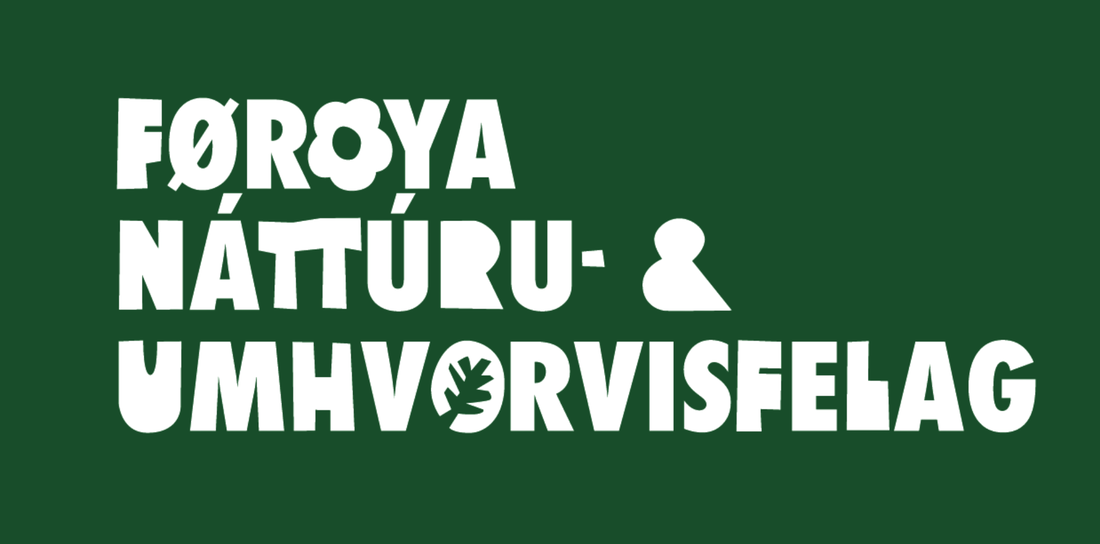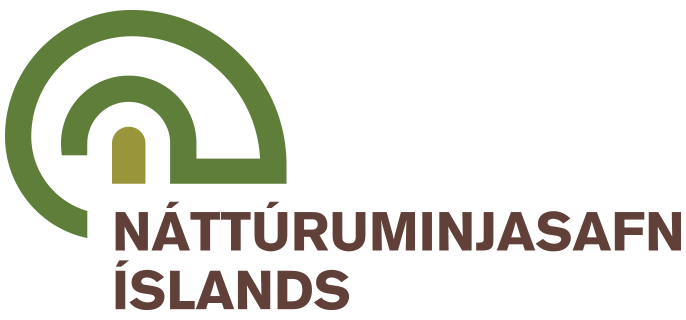|
|
What is it? Common reindeer lichen, or simply reindeer lichen, is a dense light-grey or white lichen, often with brownish parts. It grows in thick and low mats, with branches that divide into multiple other branches. In boreal pine forests, it can be the main species found on the ground. Reindeer lichen is sometimes called "reindeer moss" but this is actually a misconception; the dense mats formed by the lichens can look like moss, but mosses and lichens are very different organisms. |
|
Interesting facts |
- Lichens like Cladonia rangiferina can survive in extremely cold or dry conditions. They are poikilohydric, meaning they do not have the ability to regulate their own water content - but they are able to survive being desiccated (dried out) and re-hydrated. Cladonia species were also found to be able to grow especially fast on burnt soils after forest fires.
- Reindeer licens are used in Alaska and northern Canada by some Arctic native peoples. Traditionally, they could be used as food, for example dried for long travels or fried. Stomachs contents of reindeer, which contains mostly partially digested lichen, is called it'rik by the Gwich'in people of Arctic Canada and Alaska. It could be rendered into paste with other ingredients such as berries or fat, and used in other dishes to enhance taste.
- Brewed into tea, Cladonia lichens were believed by some Arctic peoples to relieve some ailments and pains. Some recent research supports the potential of some of these lichens, including Cladonia rangiferina, for being natural antioxidants or antimicrobial agents.
Pictures
- "Caribou Lichen [Cladonia rangiferina]" by MIKOFOX ⌘ Reject Fear, Go Outdoors, Live Healthy is licensed under CC BY-NC-SA 2.0
- "Cladonia rangiferina" by aburgh is licensed under CC BY-NC-SA 2.0
References
- Andre, A., & Fehr, A. (2002). Gwich’in Ethnobotany: plants used by the Gwich’in for food, medicine, shelter and tools. In Gwich’in Social and Cultural Institute and Aurora Research Institute (2nd ed.). Gwich’in Social and Cultural Institute and Aurora Research Institute.
- Crawford, S. D. (2014). Lichens Used in Traditional Medicine. In B. Ranković (Ed.), Lichen Secondary Metabolites: Bioactive Properties and Pharmaceutical Potential (pp. 27–80). Springer International Publishing. https://doi.org/10.1007/978-3-319-13374-4_2
- Hörður Kristinsson, Mikhail Zhurbenko & Eric Steen Hansen. Panarctic checklist of lichens and lichenicolous fungi. CAFF Technical Report No. 20, CAFF International Secretariat, Akureyri, Iceland, July 2010.
- Junttila, S., Laiho, A., Gyenesei, A., & Rudd, S. (2013). Whole transcriptome characterization of the effects of dehydration and rehydration on Cladonia rangiferina, the grey reindeer lichen. BMC Genomics, 14(1). https://doi.org/10.1186/1471-2164-14-870
- Kari, Priscilla Russell. (1987). Tanaina plantlore. Dena'ina K'et'una: An ethnobotany of the Dena'ina Indians of southcentral Alaska. 2nd ed. [Revised]. Anchorage, AK: U.S. Department of the Interior, National Park Service, Alaska Region. p.205
- Kosanić, M., Ranković, B., Stanojković, T., Rančić, A., & Manojlović, N. (2014). Cladonia lichens and their major metabolites as possible natural antioxidant, antimicrobial and anticancer agents. LWT - Food Science and Technology, 59(1), 518–525. https://doi.org/10.1016/J.LWT.2014.04.047
- Starri Heiðmarsson. (2007). Cladonia rangiferina. Icelandic Institute of Natural History. https://en.ni.is/biota/fungi/ascomycota/pezizomycotina/lecanoromycetes/lecanoromycetidae/lecanorales/cladoniaceae-15
- Roturier, S., Ollier, S., Nutti, L. E., Bergsten, U., & Winsa, H. (2017). Restoration of reindeer lichen pastures after forest fire in northern Sweden: Seven years of results. Ecological Engineering, 108, 143–151. https://doi.org/10.1016/J.ECOLENG.2017.07.011
